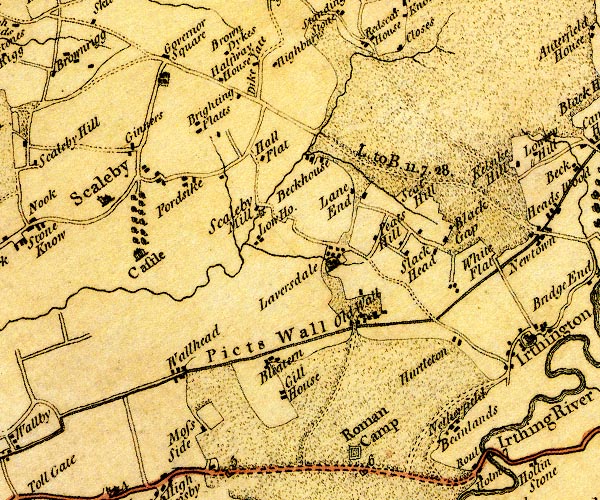




placename:- Wallhead
placename:- Wallhead

D4NY46SE.jpg
"Wallhead"
block or blocks, labelled in lowercase; a hamlet or just a house
item:- Carlisle Library : Map 2
Image © Carlisle Library
placename:- Wall Head
 goto source
goto sourcePage 227, Mr Horsley:- "..."
""From Bleatern to Wall head Severus's wall and ditch continue visible in about the second degree at least. But from thence to Walby the wall is very obscure, though the ditch continues visible. The most westerly houses at Wall-head stand upon a piece of ground called Hen-moss-brow; and about thirty years ago was found here a remarkable stone, which by the accounts of it seems to have been a Roman threshold. The stone was removed from the place to Crossby, but I know not what is now become of it. Walby stands just upon the wall, which is lost in the village. Some have thought there was the appearance of a station on the north side of this village. The country people say they several times turn up lime and stones with the plough. But the ground is wet, and not very fit for a station; and the lime and stones, which are plowed up, may have belonged to the wall itself, or a castellum, which probably has been at this place. ...""
